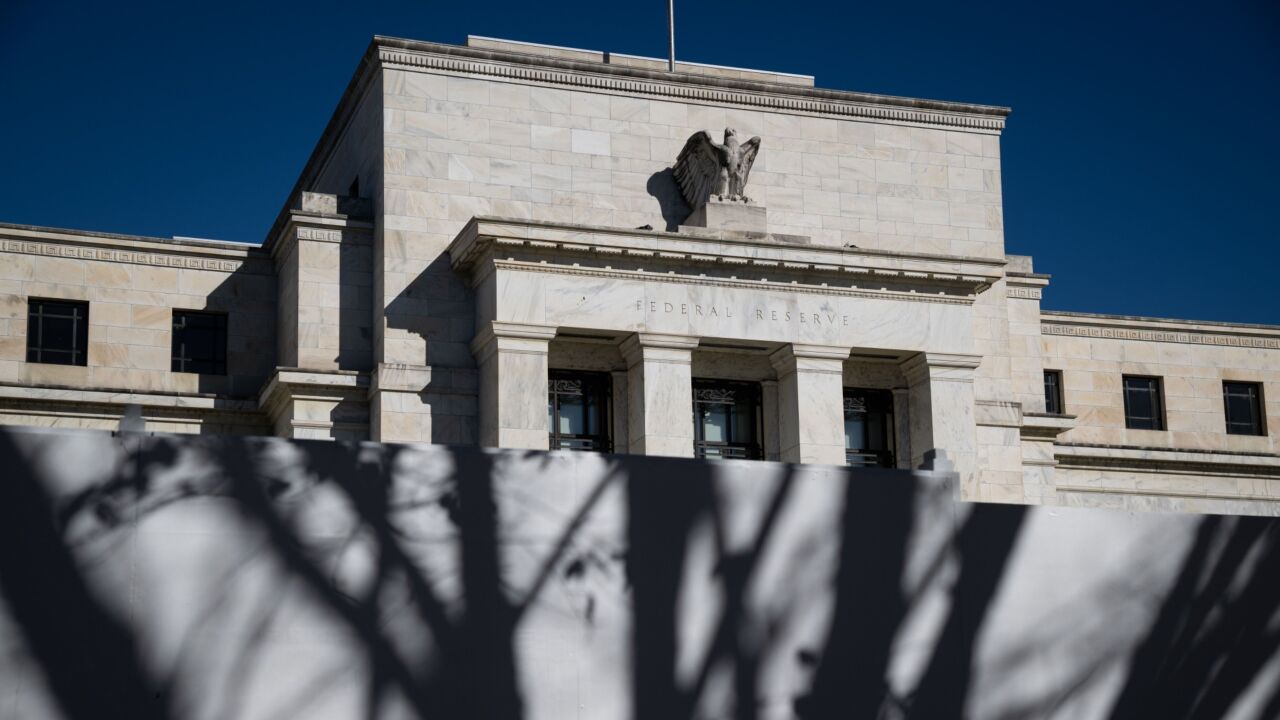
Here are some of the newest ideas being tested with many different forms of biometric authentication.
This listicle is compiled from reporting by PaymentsSource writers including John Adams, Kate Fitzgerald and David Heun. Click the links in each item to read more.

Mastercard brings fingerprinting into the home
When consumers receive an EMV card from their issuer equipped with Mastercard’s fingerprint recognition technology, they may enroll their biometric data on the card using their finger and a special sleeve that accompanies the card.
The streamlined enrollment process is Mastercard’s latest attempt to improve
With the new in-home enrollment process, consumers receive an enrollment kit in the mail separately from the card, a Mastercard spokesperson explained. The consumer inserts the card and the battery-powered sleeve activates enrollment, registering the user’s fingerprint on the card’s sensor.

Shoppers undeterred by Face ID's fine print
In eliminating the fingerprint sensor to accommodate an edge-to-edge display, Apple had to redesign a lot of the ways its smartphone handles common interactions, especially payments. And while the company touted the strength of its new Face ID system, it came with a few words of caution.
"If you happen to have an evil twin, you really need to protect your sensitive data with a passcode," warned
When picked up by a stranger, that stranger has a one in a million chance of being able to trick the camera — a huge improvement from the one in 50,000 chance with Touch ID, which Schiller described as the "gold standard" of biometric authentication. The odds get lower when people such as family members share traits with the phone's owner, but it has protections against being unlocked by a sleeping user's face or a photo of the user.
"Face ID also works with Apple Pay," Schiller said. "You look at iPhone X to authenticate and hold it near the payment terminal to pay."

BBVA tests its own facial ID system
The mobile app is powered through technology from the startup Veridas, which was a joint venture last year of BBVA and Das-Nano. Restaurant partner Sodexo Iberia is also involved in the project.
More than 1,000 employees at Ciudad are using the payments app, which provides the ability to reserve tables and dine without dealing with a bill. Customers inform a waiter they are ready to leave, and the waiter verifies registration in the system and an account linked through facial recognition. The cost of the meal is shown through the app.
BBVA estimates that app users save up to 10 minutes at restaurants, which also benefit through increased billing from table turnover. "With this project, we're eliminating the friction points for customers when they make a purchase in a store," Ignacio Banon, BBVA's head of global payments, said in a March press release.
The next step for the payments app, BBVA says, is to move the facial recognition into practical uses in retail store settings. The application also has a person-to-person feature that allows a registered user with a linked credit card to send funds to others by sending messages directly from the app.

Western Union uses biometrics to bring on new customers
One puzzle that’s yet to be solved is finding the best way to store sensitive customer biometric data. “It’s a work in progress,” Rhodes said.
Competition from traditional rivals like MoneyGram, along with swarms of new players and startups, is intense.
“We have the technological muscle, the name recognition with consumers and the physical presence on the ground, and combined with our evolving digital technology I think we have a better shot at gaining new market share than most startups,” she said.

Selfie Pay is coming to Europe … next year
Starting in April of 2019, Mastercard says its
Mastercard Identity Check is already available in 37 countries, and Mastercard says the new European Union regulatory requirements on authentication coming into force through PSD2 state that banks across the continent must offer the biometric option by early 2019.
"Biometric technologies perfectly match consumers’ expectations of getting the secure payment solutions of tomorrow, in line with the increased digitalization of lifestyles," Javier Perez, president of Mastercard Europe, said in a January press release. "This can significantly benefit consumers, retailers and banks by improving the purchase experience and better securing the transaction."

Scanning finger veins in the cafeteria
Nets’ innovation arm, Smart Payments, teamed with Fingopay and the Copenhagen Business School to enable payments via finger vein authentication at the school’s cafeteria where students, faculty and others are making purchases sans any physical payment instrument, Nets said.
Finger scanners are installed at all checkout points in the school’s cafeteria and anyone already enrolled in Dankort may participate with no PIN required, even for higher-ticket purchases.
Finger vein technology is more secure than fingerprint authentication on smartphones because finger vein patterns are almost impossible to replicate and blood circulation is required for payment authentication.
Users may unlink the finger scanning function from their Dankort account at any time, Nets added. Nets, launched in 2009, is based in Ballerup, Denmark.





